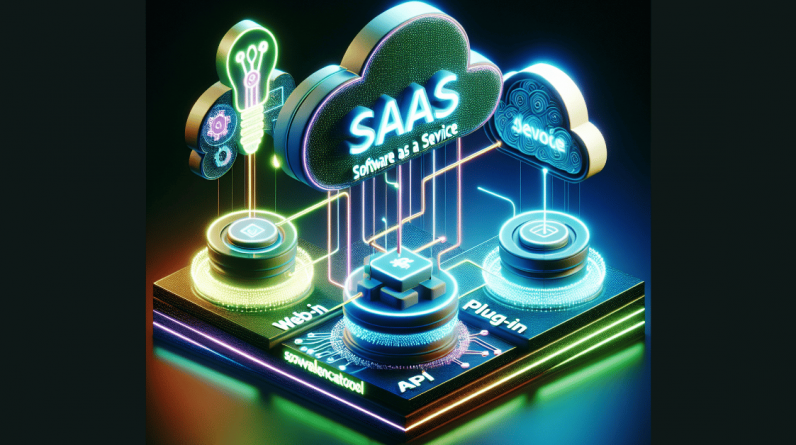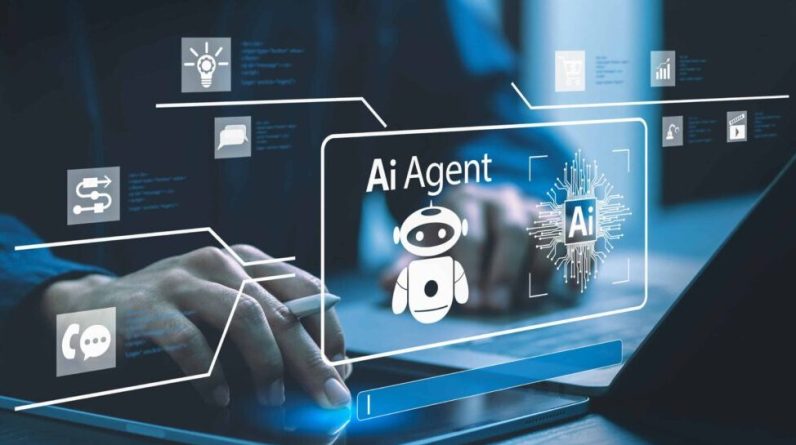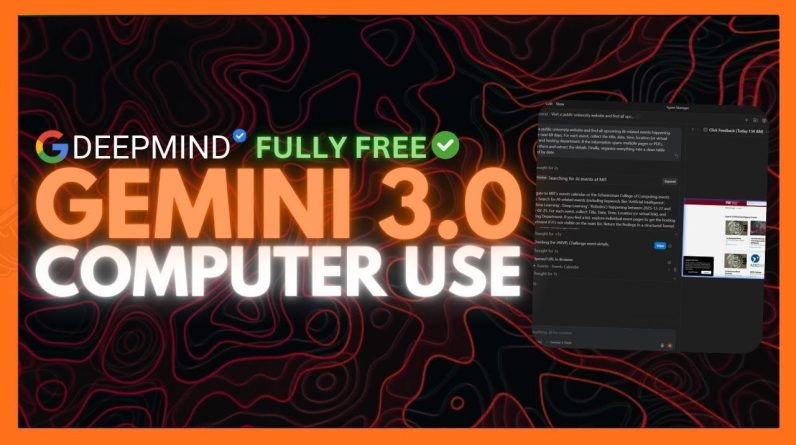
Enterprise software is at a turning point. For the last 2 decade Software-as-a-Service (SaaS) dominated as the go-to model for businesses, offering scalable, accessible solutions for almost any operational need. Today, however, we’re seeing a fundamental shift. The average number of SaaS applications used by an enterprise decreased by 14% in 2023.
The enterprise software landscape is being transformed by the rapid development of artificial intelligence and the rise of new use cases driven by changing consumer behavior. And it’s not a gradual evolution, it’s a complete paradigm-change. The disruptor is getting disrupted.
What’s replacing it is something far more powerful and targeted — AI-powered vertical SaaS. This new wave of SaaS focuses not on broad-based solutions but on highly specialised, industry-specific tools that deliver clear business outcomes. Mindbody, a vertical SaaS provider for fitness and wellness businesses, claims to grow revenue by an average of 36% within 6 months when moving from traditional SaaS.
Enterprises are moving past the era of generic software in favor of comprehensive, tailored solutions that combine AI, automation, and deep domain knowledge to address their specific needs. This shift marks the beginning of a new era for enterprise technology, one where business results, not software features, are the primary concern.
The Decline Of Traditional SaaS
Enterprises today juggle dozens, if not hundreds, of SaaS applications. Each platform claims to solve a specific problem, but this fragmented approach has led to integration headaches, data silos, and an overwhelming sense of complexity.
Enterprise decision-makers no longer care about the underlying technology itself—they care about what it delivers. They care about tangible outcomes like cost savings, operational efficiencies, and improved customer experiences. This shift in focus is causing companies to rethink their approach to enterprise software.
Legacy SaaS platforms, once hailed for their simplicity and scalability, now struggle to meet the evolving demands of modern enterprises especially in the post GenAI era. Giants like Salesforce, which once defined the SaaS era, are scrambling to adapt, as seen in their pivot towards “Agentforce” — an AI-powered initiative aimed at reshaping their offering for the future. But even these efforts reflect a growing realisation across industries: enterprises are experiencing “SaaS fatigue”, wasting an average of over $135,000 on unused software licenses annually.
AI has taken center-stage to correct this course, not by adding more tools, but by introducing a smarter, more targeted and unified approach: vertical SaaS.
The Rise Of AI-Powered Vertical SaaS
Enterprises no longer want one-size-fits-all solutions. They want software that understands the intricacies of their industry and can adapt to their specific needs. AI-powered vertical SaaS delivers exactly that. Unlike traditional SaaS, which is built for broad use cases, vertical SaaS is deeply tailored to specific industries. By using AI, it can offer real-time insights, automation, and optimisations that solve problems unique to each sector.
Take ecommerce, for instance. AI-powered vertical SaaS solutions in this space don’t just help manage product listings—they analyse customer behavior, predict purchasing trends, and even personalise shopping experiences based on real-time data. In addition, AI-driven platforms optimise inventory management by forecasting demand, automating restocking, and identifying potential supply chain disruptions. In marketing, they help tailor promotions, predict customer lifetime value, and enhance conversion rates with precision targeting.
This hyper-targeted approach allows vertical SaaS to deliver tangible business outcomes rather than generic efficiencies. AI powers this shift by enabling platforms to adapt to industry-specific challenges, automate routine tasks, and provide insights at a scale and speed that was previously unattainable.
Think of traditional SaaS like a Swiss Army knife — versatile, but not always the best tool for a specific task. vertical SaaS, however, is like a surgeon’s scalpel or a craftsman’s chisel — precisely designed for a specific job, delivering results with pinpoint accuracy and efficiency. What would you rather use for mission-critical work: a multi-tool that does everything adequately or an instrument built to perform one task perfectly?
Vertical SaaS – Future Of Enterprise Software
Deep Domain Knowledge Is The Key
AI-powered vertical SaaS is effective because it doesn’t attempt to be everything for everyone. Instead, it leverages deep domain knowledge to understand the unique challenges faced by specific industries.
Whether it’s healthcare, retail, manufacturing, or finance, vertical SaaS platforms are built with industry expertise at their core. This deep knowledge enables these platforms to address industry-specific pain points, making them far more valuable than traditional SaaS platforms.
In healthcare, for example, compliance with regulatory frameworks like HIPAA is non-negotiable. Vertical SaaS platforms can be designed with these regulations in mind, ensuring that data privacy and security are prioritised while enabling faster access to life-saving insights. In retail, these platforms can use AI to analyse consumer behavior trends and optimise inventory in real time. The result? solutions that don’t just provide tools, but real outcomes that align with the specific goals of each business.
Orchestrating Existing Systems, Data, And AI For Business Results
Most enterprises have spent years building a complex web of legacy systems, data repositories, and software platforms. The idea of ripping and replacing these systems for something new is not only unfeasible but also impractical. AI-powered vertical SaaS doesn’t require enterprises to start from scratch. Instead, it seamlessly integrates with existing systems, orchestrating data and workflows to unlock business value.
AI plays a critical role in this integration. By pulling data from multiple sources and applying advanced machine learning or deep learning models, these platforms can provide actionable insights at a speed and scale that manual systems can’t match.
Enterprises no longer need to rely on disparate point solutions or traditional SaaS tools that work in silos. Instead, vertical SaaS platforms can orchestrate data from across the organisation, unlocking new insights and automating workflows in ways that deliver real business outcomes.
For example, an AI-driven vertical SaaS platform for retail might analyse sales trends from multiple regions, predict supply chain disruptions, and automatically optimise inventory levels—all without human intervention. In this way, enterprises move from simply managing operations to optimising them in real-time.
Seamless Integration With Existing Systems
The last thing enterprises need is yet another platform that disrupts their existing operations. The beauty of AI-powered vertical SaaS is that it integrates seamlessly into what businesses already have. Enterprises are tired of dealing with massive data migrations and lengthy implementation cycles. What they need are solutions that enhance what they already use without introducing friction.
This seamless integration means vertical SaaS can slip into place, becoming an essential part of the workflow without requiring a complete overhaul.
By blending into existing systems, these platforms enable enterprises to extract value from day one. And because they are powered by AI, they continuously learn and adapt, ensuring that the solutions become more effective over time, not less.
Invisibility In Workflows
With 83% of IT leaders stating workflow automation is necessary for digital transformation, the most effective software then isn’t the one that demands the most attention. It’s the one that becomes invisible, operating in the background and enhancing workflows without users even noticing.
AI-powered vertical SaaS does exactly this. By automating routine tasks, streamlining operations, and delivering real-time insights directly within existing workflows, these platforms make the enterprise more efficient without adding complexity.
Imagine a logistics company where AI quietly optimises delivery routes, predicts shipment delays, and reallocates resources in real time—all without requiring the intervention of managers. Or a healthcare system where AI automatically flags potential health risks for patients, allowing doctors to focus on patient care instead of data entry. When AI becomes invisible, it frees up employees to focus on high-value tasks that truly move the needle.
End-To-End Workflow Automation
The real power of AI lies in its ability to automate not just individual tasks but entire workflows. AI-powered vertical SaaS doesn’t just provide insights; it takes action. From monitoring key metrics to making decisions and executing tasks, these platforms automate the full range of enterprise processes.
Consider a finance team using a vertical SaaS platform that automates everything from invoice processing to fraud detection. The platform doesn’t just alert the team to potential issues rather it resolves them autonomously. In manufacturing, vertical SaaS platforms can monitor equipment, predict failures, and automatically schedule maintenance before a breakdown occurs.
This level of end-to-end automation unlocks new efficiencies and drives faster decision-making, allowing enterprises to stay agile and competitive.
The Path Forward: From Generic To Vertical SaaS, Powered By AI
The days of enterprises investing in one-size-fits-all software are numbered. What businesses need now are tailored solutions that deliver real business outcomes—solutions built on deep domain expertise, powered by AI, and designed to integrate seamlessly into existing operations.
The next generation of enterprise software won’t just solve problems; it will transform industries. As enterprises look to the future, those who embrace AI-powered vertical SaaS will be the ones who lead the charge in reshaping their industries and driving meaningful results. AI isn’t just disrupting SaaS, it’s building something entirely new. And, when Andreessen Horowitz pays attention, so should you.






